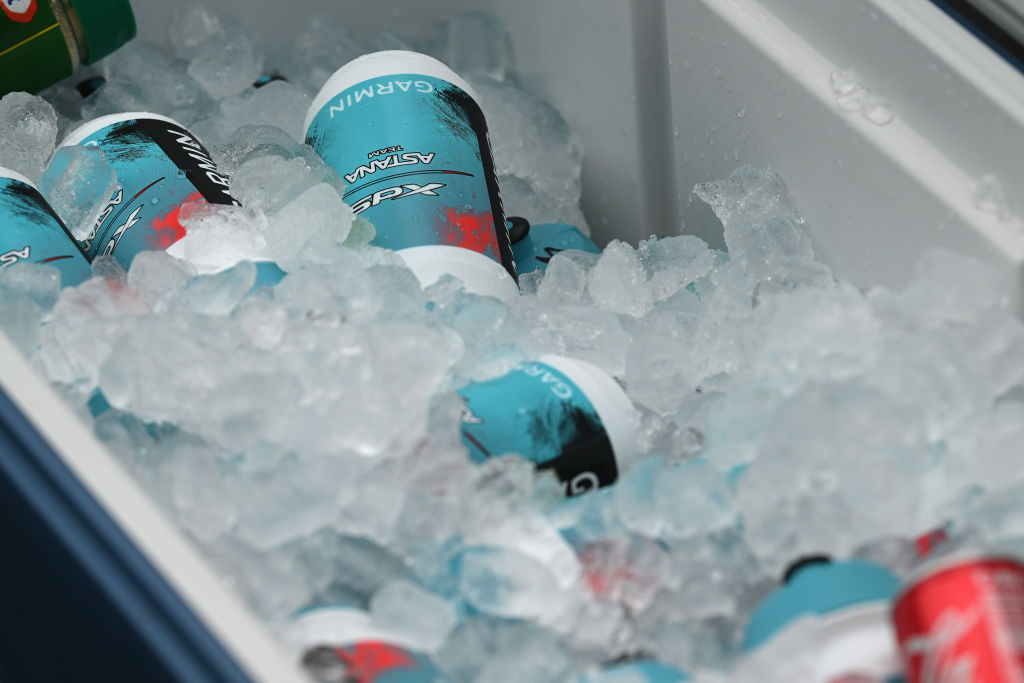
The peloton at the Tour Down Under are adjusting to a slew of new UCI rules for 2025, most notably a provision that restricts food and water hand-ups to designated feed zones and from team cars in the convoy.
While race organisers and teams appeared to be blindsided by the rule, which was published on December 23, 2024, teams association president Brent Copeland clarified the rationale behind the rule to Cyclingnews.
"It's been an ongoing discussion for quite a while now within SafeR, where I'm representing as the AIGCP president on the SafeR commission, as well as being involved in case management on the SafeR supervisory board," Copeland said.
While water hand-ups outside of feed zones were allowed under UCI rules before the COVID-19 pandemic, the practice exploded over the last four seasons as teams were given more leeway under loosened rules designed to allow for social distancing.
One result of the scattered water points has been team staff scrambling to get from one point to the next, creating an unintended hazard.
"Many people don't see what happens when the soigneurs, doctors, mechanics or whoever is being told to do a water point, how they are leapfrogging from one point to the other and what happens outside of the race environment," Copeland explained to Cyclingnews.
"If the group comes past and they're really going fast, you have to wait for the dropped group to get bottles, [then] jump in the car and race to the next one before the group goes past. We've heard of and seen a lot of speeding, a lot of reckless driving, and we dread the day that a terrible accident happens outside of it.
"We're trying to avoid all of these factors within reason and obviously, the priority is the safety and wellbeing of the riders, without having them going into dehydration, and using common sense when there are hot days."
While the new rule caused the Tour Down Under organisers some stress trying to find resources to add additional feed zones, teams have found the UCI to be flexible in allowing more water points so far.
Copeland says the stricter rules will have the benefit of leveling the playing field in addition to enhancing safety on and off course.
"There are very high budget teams that use the water points for specific reasons [and] there are the lower budget teams that unfortunately don't have the resources to do as many water points, so [we are] trying to just balance that out without going to extremes."
He added that riders who turned professional after the pandemic will now have to learn a skill that used to be second nature for pros – going back to the team car to get bottles and then riding back through the group.
That flow of riders going back and forth to the convoy, Copeland says, changes the dynamic in the peloton. It might be counterintuitive to suggest that more riders in the convoy could be safer, but Copeland explains, "If you get the riders going back to the vehicles, you get a good flow of the peloton, whereas, with the water points, it's really stagnant. The riders find themselves in the top 20 position ... and they never go back to the car. So they don't gain that experience as a more experienced rider would have of going through the peloton."
Riders still might have a chance to get hand-ups from the roadside outside of the feed zone, but the new rules also require anyone doing hand-ups to be UCI licensed, which is another safety consideration.
"It seems easy to give a bottle, but when a rider comes past at 60 kilometres an hour ... you've got to know what to do.
"So we're trying to make it as safe as possible, and understand that there are ... a lot of riders that have turned (pro) fresh in the last few years who have never known a different way."







